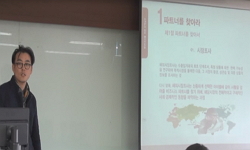Grain accounted for the highest proportion of exports in Busan Port as well as in the entire Chosun in Japanese colonial era. Minerals, metals, and machinery accounted for the second-highest proportion of exported goods after grains in the entire Chos...
http://chineseinput.net/에서 pinyin(병음)방식으로 중국어를 변환할 수 있습니다.
변환된 중국어를 복사하여 사용하시면 됩니다.
- 中文 을 입력하시려면 zhongwen을 입력하시고 space를누르시면됩니다.
- 北京 을 입력하시려면 beijing을 입력하시고 space를 누르시면 됩니다.

일제강점기 부산항의 무역- 상품 종류별 구조를 중심으로 - = A Study on the Structure of Trade of Busan Port in Japanese Colonial Era
한글로보기https://www.riss.kr/link?id=A108948160
- 저자
- 발행기관
- 학술지명
- 권호사항
-
발행연도
2024
-
작성언어
Korean
- 주제어
-
등재정보
KCI등재
-
자료형태
학술저널
-
수록면
201-246(46쪽)
- DOI식별코드
- 제공처
-
0
상세조회 -
0
다운로드
부가정보
다국어 초록 (Multilingual Abstract)
Grain accounted for the highest proportion of exports in Busan Port as well as in the entire Chosun in Japanese colonial era. Minerals, metals, and machinery accounted for the second-highest proportion of exported goods after grains in the entire Chosun, but textiles and clothing was second largest exports in Busan Port. As Chosun functioned as a food base for Japan, grain became the most important item for export. However, the role of Busan Port in the export of grain was decreasing.
Textiles and clothing products was an important export of Busan Port. In both the country and Busan Port, the highest proportion of exports of textile and clothing products was the export of thread to Japan. The threads included cotton and cotton types, cocoons and raw silk, and most of them were used as raw materials for Japanese spinning and manufacturing businesses. The export of much threads through Busan Port to Japan is a good example of the close inclusion of the Chosun economy in the division of labor with the Japanese economy.
In Busan Port as well as the whole Chosun country, the major imported goods was grain, textiles, clothing, and metal and machinery. However, the proportion of grain and food imports in Busan Port was relatively low across the country. This is because cheap overseas agricultural products, especially those from China, which accounted for a large portion of grain and food imports, were imported through the border area and Incheon Port. In Busan Port, the import of agricultural products except in the 1910s was high. This is because foreign rice, especially Taiwanese rice, was imported through Japan and flour was imported from Japan.
The growth rate of imports of textile and clothing products in Busan Port was higher than that of the whole country. Textiles and clothing products are classified into yarn, textiles, and clothing, and in Busan, yarn and clothing showed a higher growth rate than textiles. This is due to the development of the spinning and textile industries along the Gyeongbu Line. In particular, it is related to the full-scale operation of Chosun Textile Co., Ltd. located in Busan.
The proportion of metals and machinery in import had steadily increased through Japanese colonial era in both the Chosun country and Busan. This reflects the progress of industrialization in Chosun. In particular, the proportion of import of machinery products was high in Busan, which included much of the re-export to Manchuria.
동일학술지(권/호) 다른 논문
-
- 부산광역시사편찬위원회
- 구산우
- 2024
- KCI등재
-
- 부산광역시사편찬위원회
- 김세진
- 2024
- KCI등재
-
- 부산광역시사편찬위원회
- 김동철
- 2024
- KCI등재
-
- 부산광역시사편찬위원회
- 이근열
- 2024
- KCI등재




 KISS
KISS






